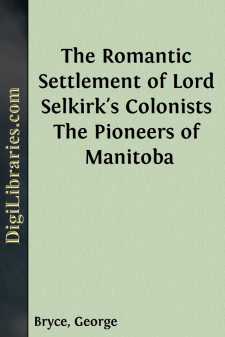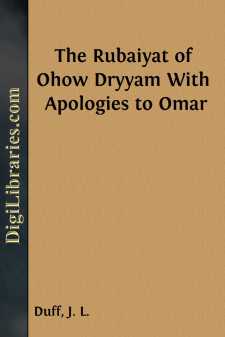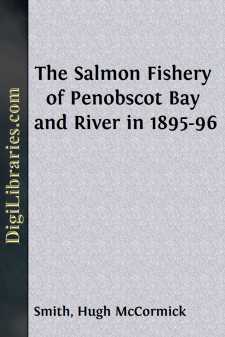Non-Classifiable
- Non-Classifiable 1768
Non-Classifiable Books
Sort by:
by:
James Milne
I PERSONAL AND PARTICULAR 'Perhaps there is something in old age that likes to have a young mind clinging to it.' Sir George Grey was speaking of the famous people he had known in his youth long, long before. He struck an inner note of nature which is surely equally valid the other way? Whenever I think of the remark, I am inclined to discover one reason why I came to know Sir George so well....
more...
by:
Ernest Weekley
CHAPTER I OF SURNAMES IN GENERAL "The French and we termed them Surnames, not because they are the names of the Sire, or the father,but because they are super-added to Christian names." (CAMDEN, Remains concerning Britain.) The study of the origin of family names is at the same time quite simple and very difficult. Its simplicity consists in the fact that surnames can only come into existence...
more...
by:
John Martin
CHAPTER 1 If you were asked, "What did Columbus discover in 1492?" you would have but one answer. But what he discovered on his second voyage is not quite so easy to say. He was looking for gold when he landed on the island of Hayti on that second trip. So his eyes were blind to the importance of a simple game which he saw being played with a ball that bounced by some half-naked Indian boys on...
more...
by:
Joseph Bedier
THE CHILDHOOD OF TRISTAN My lords, if you would hear a high tale of love and of death, here is that of Tristan and Queen Iseult; how to their full joy, but to their sorrow also, they loved each other, and how at last they died of that love together upon one day; she by him and he by her. Long ago, when Mark was King over Cornwall, Rivalen, King of Lyonesse, heard that Mark’s enemies waged war on him;...
more...
by:
George Bryce
CHAPTER I. THE EARLIER PEOPLE. A PATRIARCH'S STORY.This is the City of Winnipeg. Its growth has been wonderful. It is the highwater mark of Canadian enterprise. Its chief thoroughfare, with asphalt pavement, as it runs southward and approaches the Assiniboine River, has a broad street diverging at right angles from it to the West. This is Broadway, a most commodious avenue with four boulevards...
more...
by:
J. L. Duff
The Rubaiyat of Ohow Dryyam IWail! for the Law has scattered into flightThose Drinks that were our sometime dear Delight;And still the Morals-tinkers plot and planNew, sterner, stricter Statutes to indite.After the phantom of our Freedom diedMethought a Voice within the Tavern cried:“Drink coffee, Lads, for that is all that’s leftSince our Land of the Free is washed—and dried.”And still the...
more...
by:
Halfdan Egedius
THE SAGA OF OLAFTRYGGVASON, CMLXVIII-M OW it befell in the days of King Tryggvi Olafson that the woman he had wedded was Astrid & she was the daughter of Eirik Biodaskalli, a wealthy man who dwelt at Oprostad. ¤ When the downfall of Tryggvi had been accomplished, Astrid fled away bearing with her what chattels she might. And with her went her foster-father Thorolf Louse-Beard, who never left her,...
more...
Extent and condition of the fishery in 1895 and 1896. While the number of nets operated in these two years was practically the same, the catch in 1896 was much greater than in 1895, and was one of the largest in the recent history of the fishery. A comparatively large number of fishermen reported that they took more salmon than in any previous year. The salmon, however, were smaller than usual, and...
more...
by:
Juliette Adam
CHAPTER I 1890 William II, the "Social Monarch"—What lies beneath his declared pacifism—His journey to Russia—The German Press invites us to forget our defeat and become reconciled while Germany is adding to her army every day. April 12, 1890. [1] What an all-pervading nuisance is William! To think of the burden that this one man has imposed upon the intelligence of humanity and the...
more...
First to appear among the inventions that sparked the industrial revolution in textile making was the flying shuttle, then various devices to spin thread and yarn, and lastly machines to card the raw fibers so they could be spun and woven. Carding is thus the important first step. For processing short-length wool fibers its mechanization proved most difficult to achieve. To the United States in 1793...
more...











